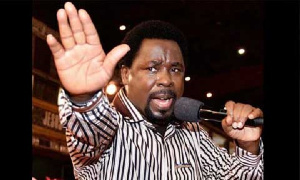Nigerian refugees in Cameroon find solace in trees

He had seen and had enough and made up his mind to flee to neighbouring Cameroon. There, he joined thousands of other refugees who had fled to seek sanctuary in Minawao in Cameroon’s Far North region, about 64 km east of the Nigerian border.
Batakwa was finally beginning to feel he had found peace when, again, life became unbearable.
“We were looking for shade everywhere, and our houses were blown off by the winds … During rainy season like this, the wind will come from nowhere with full force to blow off our houses all the time. I (used to go to) the neighboring villages to seek shelter. At times in the daytime, this place was very hot,” recalled the 46-year-old man.
The new arrivals accelerated the desertification process in the semi-arid region, ripping up the few surrounding trees for firewood and leaving nothing but sand and rocks.
There is hope now. Since 2018, trees, including neem, acacia and moringa, dot the over 600-hectare landscape of the Minawao refugee camp, where approximately 70,000 Nigerians have sought shelter from violence in their homeland.
The land is sandy, dry and scorched by the searing sun of the African Sahel, but that has not stopped refugees from planting nearly half a million trees, which has turned an extensive area of desert into forest and changed people’s lives.
“Now we have enough trees in the camp, our houses are not blown off like before, and we have good air to breathe,” Batakwa, now the president of Nigerian refugees in the Minawao camp, told Xinhua standing in front of his mud-walled house roofed with white tarpaulins and surrounded by trees.
Shouck Ali, another refugee, was one of the first to begin planting trees when he arrived at the camp in 2013.
“I decided to plant the trees simply because I know it will give me shade where I can have some fresh air during the dry season because, in my country, where I come from, I have a lot of trees surrounding my house,” said Ali, 45, who regularly left the camp in search of firewood, a dangerous and exhausting task.
“When I look at the trees and the wind that blows on the trees, I feel at home. So that at least gives me a rest of mind sometimes when I am upset.”
“Sponsored by the United Nations High Commissioner for Refugees (UNHCR) and partner organizations, the project, dubbed ‘Make Minawao Green Again’, is working to make a difference for everyone and reverse deforestation both in the camp and surrounding villages,” said Kimberly Roberson, head of the UNHCR sub-office in Maroua, capital of Far North region.
“Some of the trees that are planted have roots that have different types of nutrients. And so, the trees not only provide wood, not only provide shade, not only provide shelter and building materials, they also provide food,” Roberson said. Refugees and local communities received training on how to give seedlings the best chance of survival in the harsh environment through a technique called “cocoon technology.”
Before now, dwindling sources of energy were a source of tension between the refugees and host communities. Roberson said she knows how important the new trees have enhanced cooperation with the host community.
The project is expanding, and more seedlings are being grown in a tree nursery. Once rooted, they will be transferred to the camp and host communities, and in their own small way, they will help contribute to climate change mitigation.
“While it (the project) won’t fight climate change, it helps reduce the impact of climate change on people and their lives. So, it’s not a huge contributor to the global fight against climate change when we talk about ocean warming and temperature rising, but it certainly brings an awareness and a certain level of returning to the earth,” Roberson said.
“The project is contributing to the Great Green Wall, an African-led initiative that aims to grow an 8,000-km continent-wide barrier to stop the ongoing desertification of the Sahel, a territory on the border of the Sahara and the Sudanian savanna,” environmentalists said.
Batakwa said there is a need to mobilize donors to expand the tree-planting campaign to all the other villages in the zone.
Source: thecitizenafrican.co.ke





